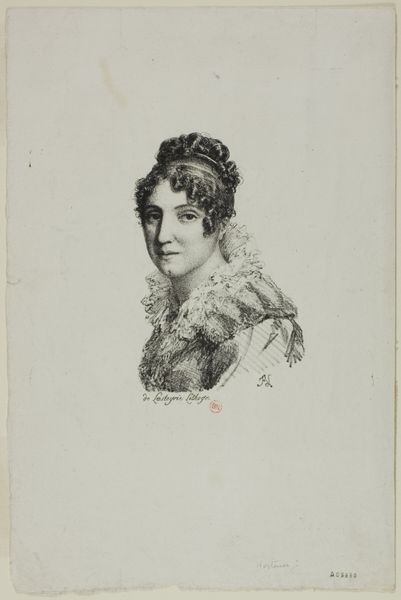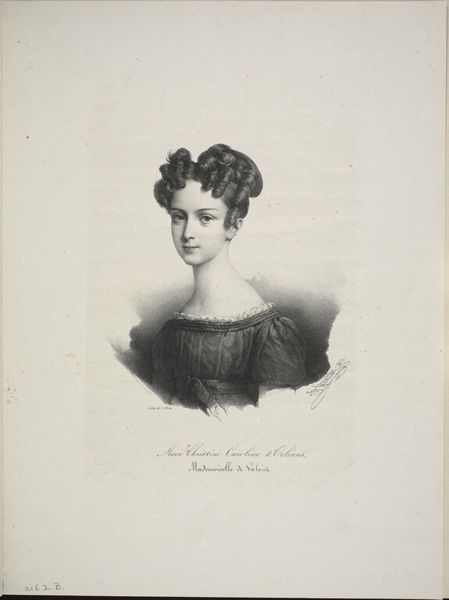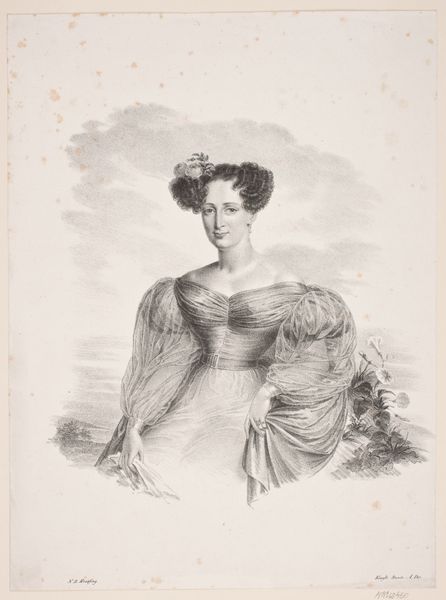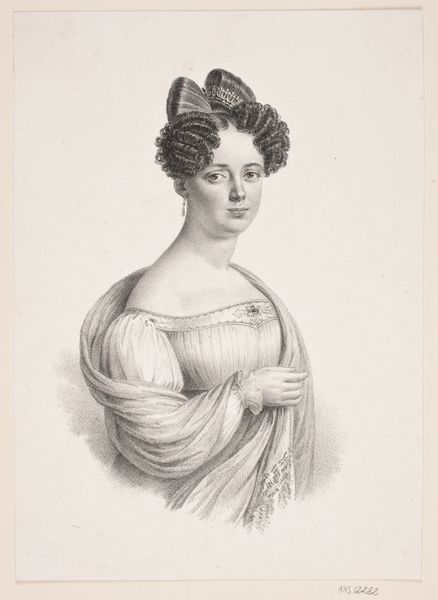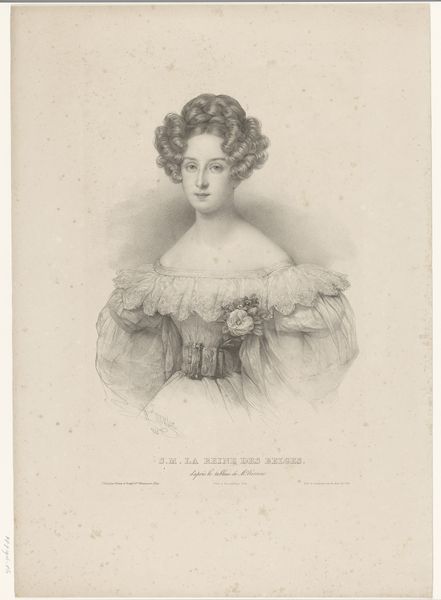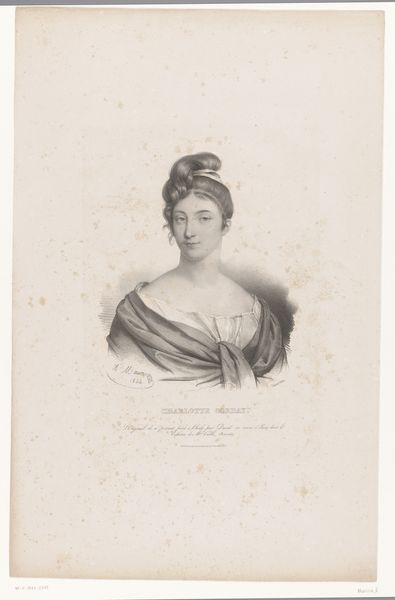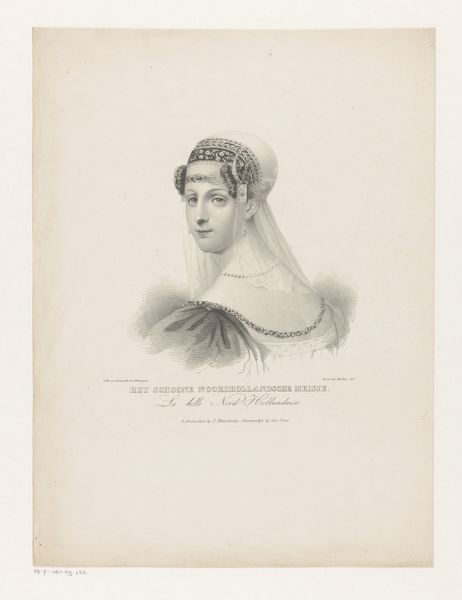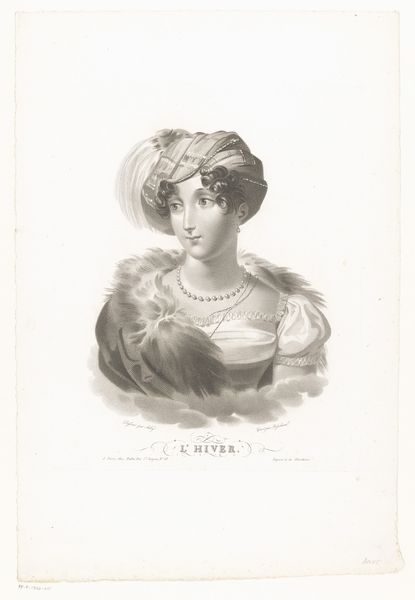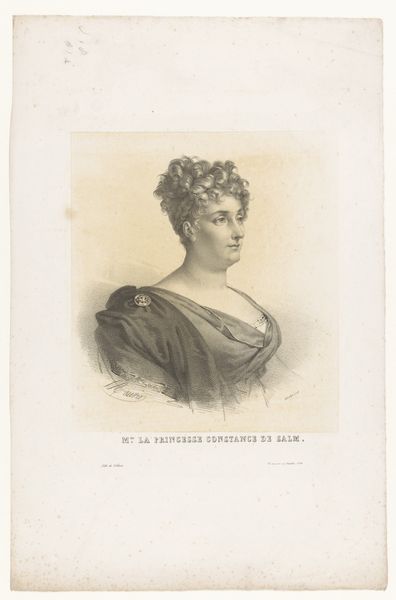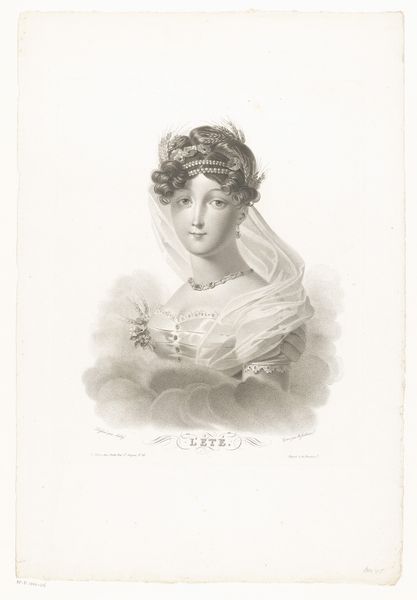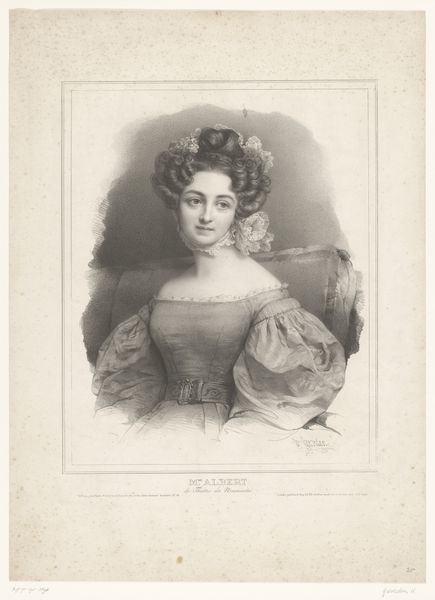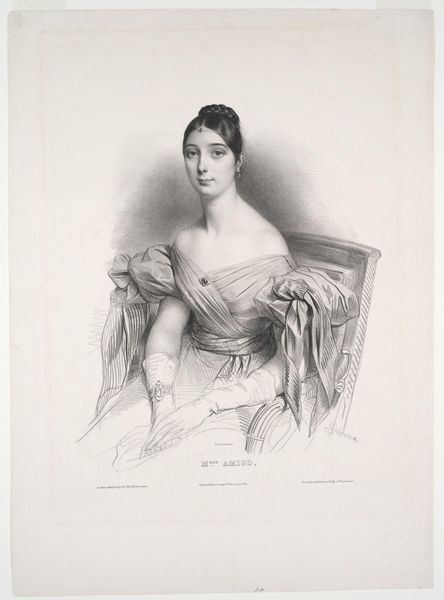
lithograph, print
#
portrait
#
neoclacissism
#
lithograph
# print
#
15_18th-century
Dimensions: 422 mm (height) x 307 mm (width) (bladmaal)
Curator: This lithograph, dating roughly from 1739 to 1839, presents a portrait of Queen Marie, residing here at the SMK. It's a striking example of Neoclassical portraiture. Editor: It certainly is. My immediate impression is one of restraint, of quiet dignity. The tonality of the lithograph, the soft greys, contributes to this feeling. The gaze is direct, yet doesn't demand anything of the viewer. I find that really compelling. Curator: It’s interesting that you mention "restraint" because the process of lithography itself necessitates a degree of control. It's not spontaneous like some other printmaking techniques. Consider the labor involved in creating these subtle gradations of tone, all through precise chemical reactions on a stone surface. Editor: And that technical precision, I think, reflects a very specific moment in European history. This controlled elegance served as a visual marker of status and legitimacy. Look at the simplicity of her dress—while appearing classically draped, it is a deliberate marker to elevate her position and tie her symbolically to that perceived ideal. Curator: Absolutely. The Neoclassical style itself, and lithography as its material manifestation, both reflect a specific set of social and economic circumstances. These portraits weren’t just decorative; they were instruments of power, replicated for broader dissemination. Editor: Exactly. Mass production here allows this image of the Queen, this particular carefully constructed ideal, to enter the visual landscape of many more than could ever view an oil painting, shifting that relationship between the powerful and the common citizen. This challenges traditional assumptions about value. It also brings into the frame notions around class, gender, and the dynamics of representation. How can such portraits uphold specific notions of class and nobility while contributing to an image? Curator: It makes one consider the economic viability for its creator, artist Wilhelm Heuer, and the labor practices within printmaking workshops of that era and, thinking more broadly, how that reflects art production across time. Editor: I think reflecting on Heuer's historical context reminds us that these images, however seemingly passive, engage with power dynamics that still affect representation today. Curator: Examining the labor and resources embedded in an image, then, also connects us to broader issues of class, accessibility, and artistic economies that go well beyond a "pretty picture." Editor: Absolutely, this piece sparks an urgent conversation for our times, encouraging scrutiny of whose stories get told and who gets to tell them, now as well as then.
Comments
No comments
Be the first to comment and join the conversation on the ultimate creative platform.
